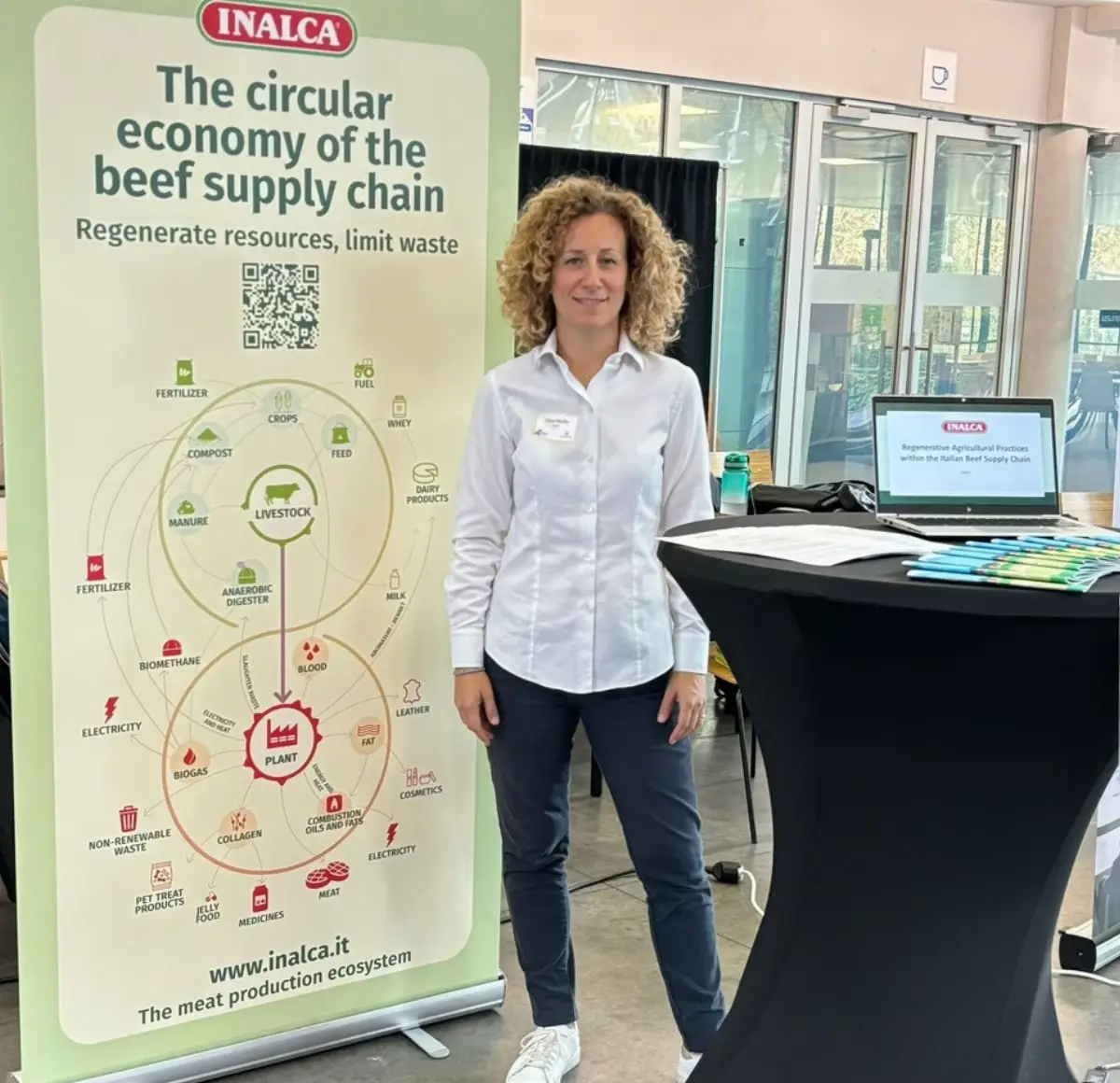
Environmental effect of improved forage fertilization practices in the beef production
A study presented at the ENAJ/EU-FarmBook Event at Ghent University

Inalca, the first Italian producer and one of the European leaders in the beef sector, has created, together with Corteva Agriscience and the University of Milan, a pilot project with the aim of improving the environmental performance of the production phase of fodder intended for cattle feeding. The project was presented yesterday in Belgium, during the ENAJ/EU-Farm Book Press and Networking Event at Ghent University, by Clara Maffei, Inalca Quality & Assurance Manager. Over 50 journalists from different European countries (Belgium, Ireland, Uk, Italy, Nederlands, Germany and Norway) participated in the meeting of the European association of agri-food journalists, chaired by Italian journalist Lisa Bellocchi.
Feeding is one of the most important factors influencing production efficiency and the environmental impact of livestock production. The study presented by Inalca evaluates the possibility of reducing the impact of beef cattle production by optimizing the fertilization management of home-grown forage on the same farms. To this end, two scenarios were compared on two beef cattle farms of company (owned by Cremonini Group) in northern Italy, a baseline scenario (BS) and a scenario with optimized management (OMS) in terms of nitrogen fertilizer use.
The cradle-to-gate LCA (Life Cycle Assessment) approach was used to compare the environmental performances in the different scenarios. Two different functional units (1 t dry matter of forage self-produced and 1 kg live weight of beef cattle produced) were used to express the results in relation to different stages of the supply chain.
The data collection and LCA were carried out by a research team from the Department of Agricultural and Environmental Sciences of the University of Milan.
The study, recently published in the journal Science of the Total Environment (https://www.sciencedirect.com/science/article/abs/pii/S0048969723047915) highlighted a significant reduction in CO2 eq emissions for all three forages considered (corn silage, mash, fodder wheat), while maintaining a production level in line with or higher than the conventional system, demonstrating that sustainability and productivity are not incompatible, but rather convergent.
The reduction of synthetic nitrogen fertilization, particularly during top fertilization, maintain yields at satisfactory levels while substantially reducing most of the evaluated impacts (e.g., Climate change from 17 % to 23 %). On the other hand, trade-offs among the different impact categories can be identified (e.g., terrestrial acidification grows up to 52 % for wheat silage).
The optimization of the fertilization also involves a reduction in the impact of the feed as a whole and then of the beef cattle produced, even though the increasing number of external inputs, not affected by best fertilization practices, for each of these two phases leads to increasingly smaller reductions in impact. Ultimately, the optimization of internal crop production practices is important from an environmental point of view for farms but represents only one of the possible mitigation interventions necessary to mitigate the entire agricultural supply chain.
EFA News - European Food Agency